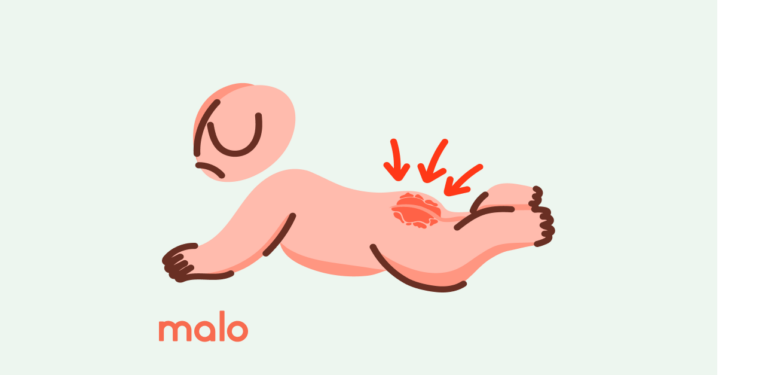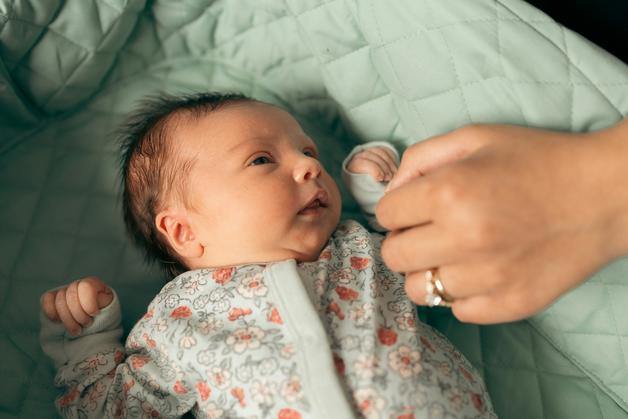The early days and nights with a newborn—an experience marked by equal shares of amazement and fatigue. Imagine you are huddled in bed, your little one finally dozing, but an aching head or postnatal soreness refuses to let you rest. Pain relief feels urgent, yet uncertainty knocks. Is it truly safe to use paracetamol and breastfeeding simultaneously? Will your baby’s delicate system remain untouched? Questions swirl, worries linger. Parents everywhere want clarity, reassurance, and trustworthy guidance about using paracetamol and breastfeeding. Is this medication a friend or a foe during the beautiful chaos of postnatal life? Scientific explanations, practical advice, and nuanced insights are at your fingertips—designed for those moments when making the right decision feels especially important. Here, every parental doubt meets an evidence-based answer. What do experts say? How can you protect your baby’s safety while caring for your own healing?
Understanding Paracetamol and Breastfeeding: Safety First, Science Always
Paracetamol and breastfeeding—a pairing that arouses both hope and hesitation among countless new parents. Paracetamol (sometimes called acetaminophen) stands as one of the most trusted, widely used analgesics (pain relievers) and antipyretics (fever reducers) globally. But what about its journey from a mother’s digestive tract to her breast milk, finally reaching the infant?
Scientific evidence and leading health authorities—the NHS, World Health Organization, and respected Indian paediatric bodies—agree: paracetamol and breastfeeding is generally safe. The mechanism is reassuringly simple. After ingestion, paracetamol is swiftly absorbed by the body, metabolised primarily in the liver, and excreted through urine. Only negligible traces (in technical terms, less than 0.1% of the maternal dose per 100 ml of milk) diffuse into breast milk. To place that in context—your child receives a hundred times less paracetamol through your milk than what paediatricians might administer directly for pain or fever in children.
Why this matters? The drug does not accumulate in the infant’s system, so repeated use—always within the recommended adult dosage—poses almost no risk to healthy, full-term babies. There’s a fundamental comfort in knowing that paracetamol and breastfeeding coexist safely when you keep to medical advice.
How Does Paracetamol Work? A Closer Look for Inquisitive Parents
Curiosity awakens: How, exactly, does this small white tablet act in your body and, potentially, in your baby’s? Paracetamol and breastfeeding, though constantly debated, is less mysterious when science enters the picture.
Paracetamol inhibits cyclooxygenase (COX) enzymes in the central nervous system—suppressing the formation of prostaglandins (molecules that amplify pain and raise body temperature). Unlike non-steroidal anti-inflammatory drugs (NSAIDs), paracetamol exerts no major anti-inflammatory action and has a famously gentle profile regarding the digestive tract. The result? Relief from aches and fever without the gastric upsets sometimes seen with ibuprofen or diclofenac.
Most paracetamol, after being transformed in the liver, leaves your system via urine. Only the tiniest fraction passes unchanged to your breast milk, never reaching a concentration that would trouble even a sensitive baby—that is, unless your child was born prematurely or has serious underlying health problems (in which case individual medical oversight is mandatory).
Smart Ways to Use Paracetamol During Breastfeeding
Managing pain as a new parent is like balancing on a tightrope—urgent relief, but absolute protection for your baby too. Some practical strategies for paracetamol and breastfeeding ensure both comfort and safety:
- Always stick to the adult dose on the label—usually up to 1 gram per dose and not exceeding 3–4 grams per day.
- Opt for plain paracetamol (simple tablets or capsules) when possible. Avoid combination products or extended-release formulas unless specifically advised—these can extend the drug’s presence in your system or combine with ingredients best avoided during breastfeeding.
- Don’t extend use for days on end without talking to your doctor. Lingering pain should always prompt a fresh medical assessment.
- If possible, take your paracetamol dose immediately after a feed—some studies suggest this tiny adjustment might further reduce even minimal exposure for your baby.
- Watch out for hidden paracetamol! Many cold and flu remedies also contain it—double-dosing by accident is easy, so check ingredient lists meticulously.
You might wonder: Am I being too cautious? Studies and real-world clinical experience suggest these guidelines are more than enough to keep both you and your baby thriving.
Paracetamol and Breastfeeding: Non-Pharmacological Relief
Sometimes, the answer doesn’t lie in a bottle at all. When pain is mild, try non-drug comfort measures first (or alongside medication):
- A warm compress for muscle aches, gentle cold for swelling or headaches.
- Plenty of rest—it sounds simple, but fatigue amplifies discomfort.
- Hydration and a balanced diet, both essential for healing and mood.
- Gentle stretching, deep breathing, or even slow postpartum yoga—these little rituals matter.
Pain isn’t always a message to medicate. With paracetamol and breastfeeding as an option in your toolkit, you can still try gentle self-care approaches as your first line of defence.
Beyond Paracetamol: Exploring Alternatives and Red Flags
What if paracetamol and breastfeeding alone won’t do the trick? Joint pain, incisions post-cesarean, toothaches—sometimes call for more robust options. Among other medicines, ibuprofen is considered safe while breastfeeding, according to clinical studies and the consensus of paediatric experts. Only tiny amounts transfer into breast milk, and they do not threaten the wellbeing of a healthy term infant.
Topical pain creams or gels may also be helpful, as they act locally with minimal systemic drug exposure. Diclofenac, though usually reserved for short, targeted use, can sometimes be recommended by a doctor.
But here’s what you should avoid:
- Codeine and similar opioids—dangerous because of unpredictable metabolism in newborns, risking sleepiness, low tone, or, worst of all, breathing difficulties.
- Aspirin—linked to Reye’s syndrome in children and not considered safe.
- Mixed-ingredient medications containing caffeine, decongestants, or antihistamines—the risk to your milk supply, newborn alertness, or even mild reactions makes them a poor fit during paracetamol and breastfeeding.
- Extended-release paracetamol—better left out to prevent excessive levels in both mother and milk.
Always keep the dialogue open with your healthcare provider, especially if an alternative or additional pain reliever seems necessary.
Expert Guidelines and Clinical Recommendations
You may encounter debates, different viewpoints, or even myths about paracetamol and breastfeeding; let’s cut through ambiguity with official guidelines:
- Paracetamol is the recommended first-line analgesic for breastfeeding mothers, as outlined by leading paediatric and maternal health organizations.
- There’s no need to avoid breastfeeding after a dose—levels in milk remain so low that scheduling is usually irrelevant.
- Extended, repeated use (many days or weeks) should prompt a medical review to exclude other underlying conditions.
- Watch your baby, but with calmness: if you notice repeated vomiting, diarrhea, persistent rash, sleepiness, difficulty feeding, or poor weight gain, connect with your paediatrician. Severe adverse effects linked to paracetamol and breastfeeding are vanishingly rare.
Dispelling Myths Around Paracetamol and Breastfeeding
Does paracetamol lower milk supply? Will your baby grow sluggish and sleepy? Such fears, though understandable, don’t align with scientific evidence. At standard doses, paracetamol and breastfeeding do not alter milk production. Studies encompassing thousands of mother-infant dyads confirm no negative signals regarding lactation or infant growth.
Of course, excess is always a risk: overusing paracetamol may burden your liver and theoretically impact your baby’s (in rare overdose cases). With sensible dosing, science is solidly in your corner—enable your healing with confidence.
Special Considerations: Premature or Medically Fragile Infants
If your newborn arrived early or is dealing with unresolved illness, a deeper level of vigilance is essential. Paracetamol as a painkiller or fever reducer may still be permitted, but only after an explicit conversation with your medical team. Doctors will consider possible effects on immature livers or kidneys, weigh benefit and risk, and create a plan matched to your baby’s precise needs.
Monitor carefully for:
- Lower feeding frequency
- Excessive drowsiness
- Irritability or difficulty gaining weight
Your instincts matter—combine them with expert help, and paracetamol and breastfeeding can still be reconciled safely.
Key Takeaways
- Paracetamol and breastfeeding are compatible: this pain reliever is the preferred option for mothers, with strong medical backing for safety.
- Infants receive only minimal drug exposure—far less than prescribed paediatric doses.
- Stick to recommended adult dosing (never exceeding label instructions) and double-check any other medicines you use.
- Clinical signs like poor feeding, rash, or drowsiness are very rare—if you notice them, seek medical input.
- Ibuprofen is another safe choice if paracetamol is insufficient, but avoid codeine, aspirin, mixed products, and extended-release formulae.
- Comfortable alternatives—rest, hydration, compresses—are supportive tools for recovering parents.
- Babies born premature or with health concerns require specialist advice before medication.
- For confidence, personalized advice, and free health tools, download the application Heloa for tailored tips and questionnaires.
Questions Parents Ask
Can taking paracetamol decrease my milk supply?
Rest assured, paracetamol and breastfeeding has been extensively studied. Routine, correct doses do not lead to lower milk output. Some parents do worry about supply when ill or medicated, but scientific data confirms that paracetamol has no measurable impact on lactation. Should you face unusual dips in supply, medication rarely is the sole cause—check in with your health visitor for broader advice.
Will my baby become unusually sleepy if I take paracetamol while breastfeeding?
At recommended dosage, paracetamol and breastfeeding does not cause drowsiness in healthy infants. The medicine appears in such low concentrations in breast milk that side effects like excessive sleep or poor alertness are not reported. If you observe changes in your baby’s energy or feeding during your treatment, it’s wise to check with your doctor for peace of mind. Usually, continued feeding with paracetamol is entirely safe.
What if I accidentally take more than the recommended dosage?
If you realise you’ve taken an extra dose, don’t panic. Skipping your next tablet and staying alert to how both you and your baby feel is usually sufficient. In cases of major overdose, immediate medical guidance is absolutely necessary—liver health for you and your infant must be safeguarded.
Are combination cold-and-flu products with paracetamol safe during breastfeeding?
Combination medications can be tricky during paracetamol and breastfeeding as they often contain substances (caffeine, antihistamines, decongestants) with a higher risk of side effects. Stick with single-ingredient paracetamol for pain relief while feeding. Your healthcare professional can suggest appropriate alternatives for specific symptoms if necessary.
Do I need to stop breastfeeding if I am taking paracetamol for fever or postnatal pain?
Not at all—evidence shows paracetamol and breastfeeding is compatible at standard doses. Avoid skipping feeds or interrupting your baby’s routine. Focus on your comfort and healing so you can nurture your baby without anxiety.
Where can I get professional support for medication decisions during breastfeeding?
Paediatricians, lactation consultants, and trained pharmacists are reliable sources for tailored guidance. If you are seeking ongoing support, consider the application Heloa with its free questionnaires and direct advice for new parents—your peace of mind is just a click away.
Further reading:









